Sucker Gap
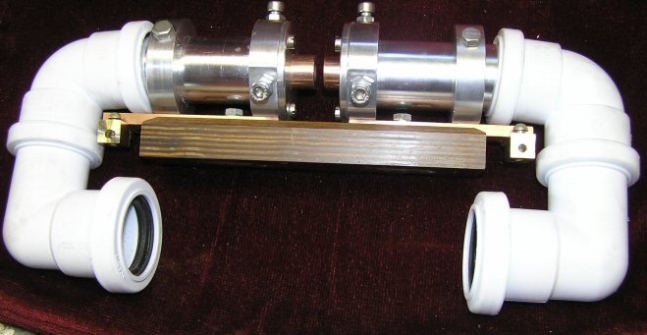
Static gaps come in various forms and at the most basic level two old nail heads facing one another would work - just about. Spark gaps however get hot, very hot in fact, and thus need cooling, otherwise they fail to quench the spark effectively.
So to work effectively something more advanced than just two old nails is definitely needed.
A popular static gap is the RQ (Richard Quick) spark gap. This consists of multiple pieces of copper tube laid side-on to one another with just a small gap between each tube. The whole affair is normally mounted so air from a fan can also blow across the gaps, which disperses both the gasses and heat.
The RQ gap, apart from being fiddley to make and adjust, has a bit of a shortfall though.
Because every spark gap has a resistive loss, you have in effect multiple resistors all in series. Fortunately the RQ gap uses small gaps between the pipes, but the number of interfaces can be quite high.
The resistance loss for each gap may only be a low ohmic value, but the power loss can still be substantial because of the high currents involved.
To overcome this, the trend nowadays is to use a high turn or high impedance primaries with RQ gaps to keep the primary circuit current down, resulting in less power lost at the gap.
The result though can sometimes be streamers that are lower in current and purple in colour, rather than a nice hot white colour.
I preferred instead to use the sucker type of gap shown below.
The two white elbows either side fit onto a tee-piece that is connected to the suction pipe of a vacuum cleaner. This serves to suck away the hot ionized air and also keep the electrodes cool. The electrodes shown above are copper bar with a 9mm hole drilled through them, this was later changed to solid electrodes with air passing over their exterior (as shown below).
Having then decided to change to just two plain copper electrodes for an increased surface area, I milled three radial slots into each one and fitted copper bar into the slots. These act both as cooling fins to aid quenching and also locate the electrode centrally within its tube. The three bars are a tight fit in their 3/16 inch deep milled slots, but because I wanted to turn the whole electrode in the lathe to put a radius on the fins outer edges, I soft soldered them as well. (It was too much thermal mass for my gas torch to Silver Solder).
The soft-solder is very unlikely to melt with the cooling, but if it did it is of no consequence as the bars will not move when located in their tubes. Once they were turned to their correct outside diameters, the complete assembly slid comfortably into the surrounding tube as shown below.
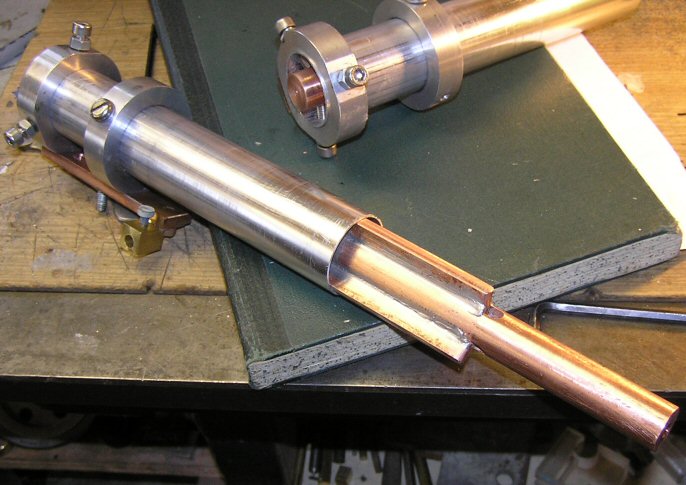
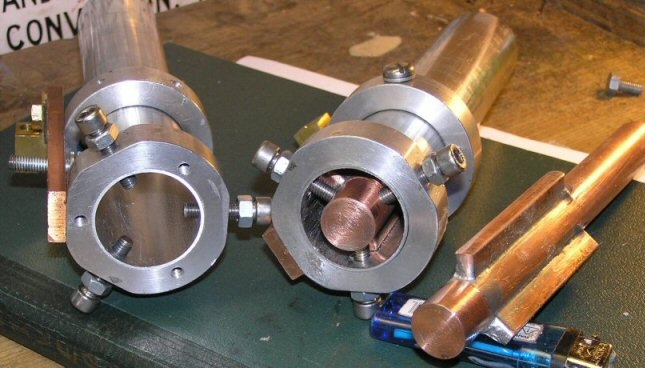
This represents some serious over-engineering and they never get hot on just an NST, and still only touch warm on ~5kW PDT. The electrodes are 0.75 inch diameter solid copper rod, 7 inches long, and each electrode (without its surrounding tube) weighs just over 2 pounds.
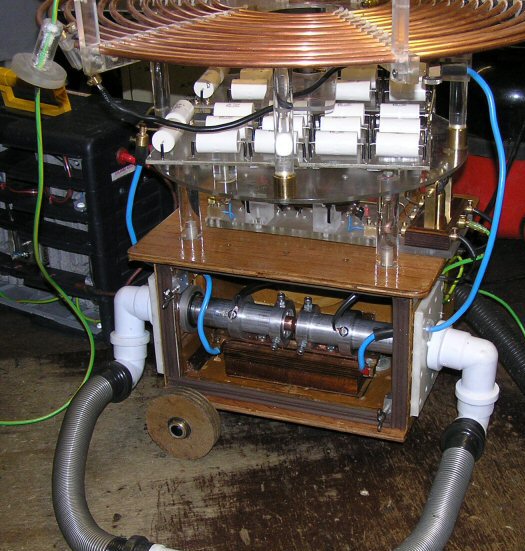
The gap in action
Normally there is a lid fitted to the front which not only hides the UV light emitted from the gap, it reduces the noise level considerably.
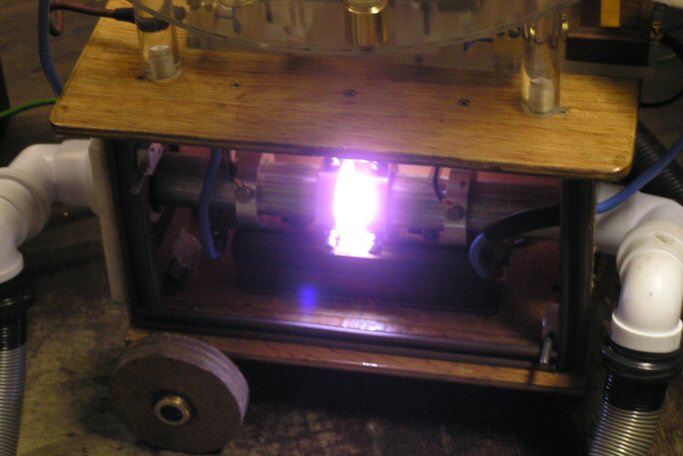
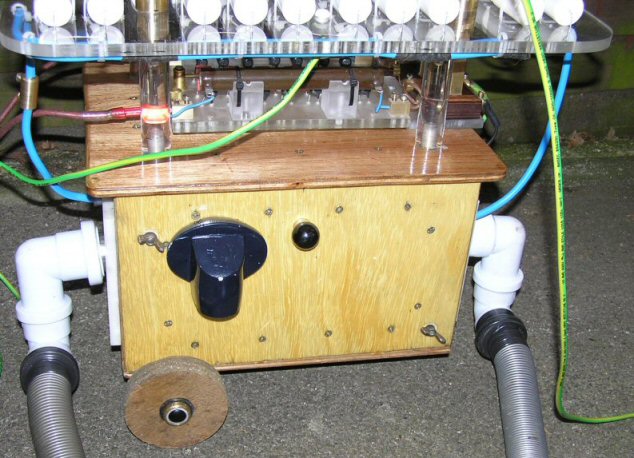
The vent in the cover is needed to allow fresh air to be drawn in.
Despite the vent, the lid still makes a considerable difference to the noise level of the Tesla coil. I prefer to hear the noise of the streamers without the crack of the spark gap. Originally on 1 kw the electrodes were only ever warm after a five minute run. This enabled me to get second notch quenching, as can be seen on the Tuning page.
This gap was used a lot on my Homemade Transformer running on 3Kva+ without any real problems. Over this figure quenching no doubt becomes an issue as I found the performance was then better with an SRSG.
